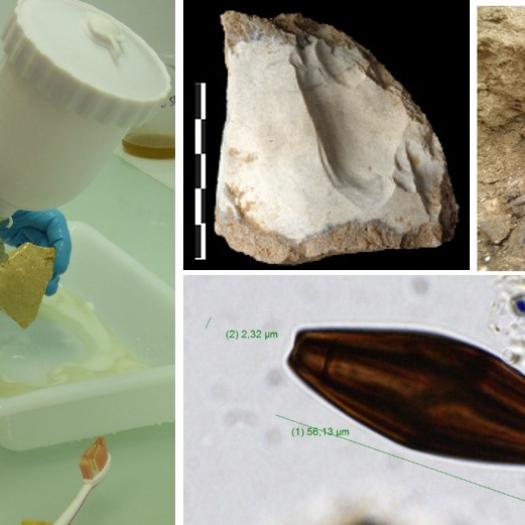Neanderthal plant use and stone tool function investigated through non-pollen palynomorphs analyses and pollen washes in the Abri du Maras, South-East France.


Lundi 8 février 2021 à 17h30 (en visio), par Yannick Miras (UMR7194, CNRS)
This pioneering research performed at the Abri du Maras (Ardeche, South-East France) explores the potential of non-pollen palynomorphs (NPP) to provide new insights into the relationships between Neanderthals and plant resources. Remains of endophytic fungi found during the analysis are key indicators of the local presence of plants, which could have potentially been used by Neanderthal groups. The recording of high concentrations of Chaetomium-type (HdV-7A) in archaeological contexts from localized areas within the shelter suggests the local presence of decayed plants near an in situ fireplace. This could point to the use of grasses or other types of plants from aquatic or marshy areas such as reed and rushes for a surface preparation (bedding?) near the fireplace. Our research has also applied for the first time a combined study of archaeological sediments and pollen washes of artefacts following a microspatial approach in the study of Middle Palaeolithic archaeological contexts. One artefact (1079), identified as a sidescrapper, provided positive results, with the recording of high concentrations of Diporotheca webbiae-type (HdV-143). We could identify the host plant of the fungal signature documented on the tool surface as alder roots by comparing archaeobotanical results with NPP analyses in modern surface samples. Following this, we have proposed the use of this Middle Palaeolithic sidescrapper for processing this plant by Neanderthal groups. Marsh and riparian ecosystems were thus attractive for Neanderthals occupying the Abri du Maras. This study clearly shows that NPP must be considered as key taphonomical, environmental and cultural indicators in archaeobotanical analyses. It also underlines the contribution of combined studies of archaeological sediments and pollen washes of artefacts following a microspatial approach to a better understanding of Middle Palaeolithic lithic tools and plant use relationships.
Référence :
Miras Y., Barbier-Pain D., Ejarque A., Allain E., Allué E., Marín J., Vettese D., Hardy B., Puaud S., Mangado Llach J., Moncel M.H., 2020. Journal of Archaeological Science: Reports, 33, 102569.
